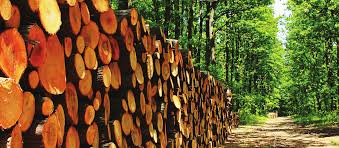It’s early in the New Year and all of us have made a New Year’s Resolution to file our income tax returns on time by April 15th, 2019 for the tax year 2018. This year many landowners will be in for a surprise as a major change has occurred in the forest tax treatment of timber sales by forest landowners. As a direct result of the new tax law, many forest owners will lose significant timber expense deductions starting in 2018 and continuing through 2025.
Most people don’t want to think about forest land property types until they have to report the receipts from a timber sale to the IRS. This article will address how expenses related to forest land can be treated in years with or without a sale. It will not address timber depletion allowance.
Each year you must make a determination of your property type for income tax purposes. There are three types to choose from. The choice basically depends on how you use your property, structure your accounting systems around your property, and how much you personally are involved in the management of your timber lands. All these questions will have a profound effect on the income tax treatment of your timber property for the calendar year 2018.
I. Personal Use Property
The first type of forest property is “Personal Use Property” which means that it’s mainly used for personal enjoyment, or in other words growing timber is just a hobby. The test as to whether forest land is personal use property is whether or not you own the property for a profit purpose. Many forest owners are not even aware they have valuable timber in their woods. For personal use property you can still get long-term capital gains treatment for timber held for one year or more, but forestry expenses must be accumulated until the sale in order to be deductible. The tax law did not change for these owners.
II. Business Property
The second type of timber property is “Business Property”. If your timber is owned as a business and you materially participate in that business, your timber expenses are fully deductible on Schedule C. To further complicate this matter, businesses are subject to passive loss rules which cannot be used to offset non-passive income such as wages. This has the unfortunate result that deductions from passive businesses maybe denied for the year when there is no income from the passive source. A passive activity is one in which you do not actively participate, mainly based on a number of hours you participate in the business. The tax law did not change for these owners.
III. Investment Property
The third type of timber property is “Investment Property”. If your property is mainly used for generating profit from growing timber or is held for asset appreciation your timber is considered investment property. The mere fact that you do not annually or regularly harvest timber from your property does not mean there is no profit purpose as the IRS regulations and rulings have held growing timber for future sale is a profit purpose.
Timber expenses may include fees paid for a forester, attorney or accountant. These expenses may also include pre-commercial thinning, firebreak maintenance, overnight travel, vegetation-competition control, insect control, disease prevention and fire control. Depreciation from equipment used is also deductible. These owners who did not have a timber harvest are in for a rude surprise. For investment property, timber expenses and certain other “miscellaneous itemized deductions” are no longer deductible.
Property Taxes
There is a glimmer of good news with respect to timber property and taxes: State and local property taxes on timber investment property are not “miscellaneous itemized deductions” and are still deductible on Schedule A. Alternatively, you may elect to treat these taxes and other timber expenses as carrying charges and deduct them upon timber sales. This is the only approach available for two categories of timber owners who do not have a timber harvest in the current tax year, timber investment property owners and personal use timber owners.
This is a very significant change in the tax laws. Many people who own timber could be affected by this rule change.
